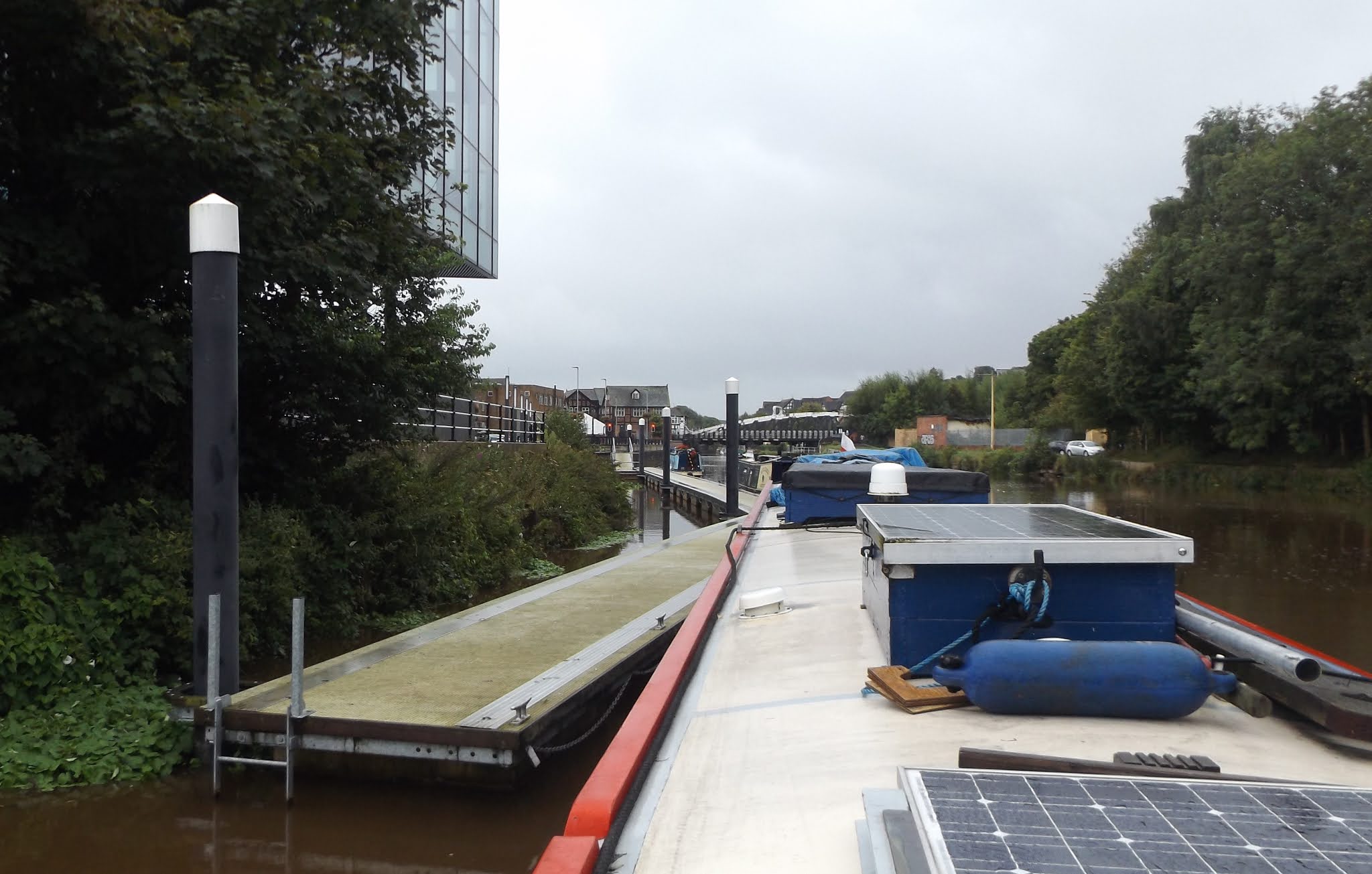Yesterday we left the quiet moorings at Vale Royal for the throbbing metropolis that is Winsford. Well, not exactly throbbing, and not really a metropolis either, but I’m sure the town has it’s moments.
It’s only 3 miles to town but boats have to negotiate the low Newbridge Swing Bridge on the way. I’d prepared by removing the chimney (yes, the chimney was back up but more of that later…) and the radio aerial, and also moving John Sage from the coal pallet to a position further aft where it’s a couple of inches lower.
Leaving Vale Royal on a fine but chilly morning.
We were following a small Sea Otter narrowboat that had come up Vale Royal Locks earlier and I was interested in seeing how much headroom he had…
We’d been under the bridge at least twice before, but with the recent rain I wasn’t sure how much extra water was coming down.
I needn't have worried, as it turned out we had 4 or 5 inches to spare.
The navigation passes the heaps of rock salt extracted from deep underground by Compass Minerals at Winsford Salt Mine.
One of the four winding houses still carries the logo of the Salt Union, formed in 1888 to regulate the industry.
Salt was discovered here by locals prospecting for coal in 1844 and it has been producing rock salt (Halite) since then apart from a 36 year period when it was closed due to over production capacity in the area. It’s mined by machinery, originally by drilling and blasting but more recently using cutting machinery. The mine is the biggest in the UK and is growing every year as more material is extracted. At around 150 metres below ground it supports a stable environment and some of the worked out areas are now used for storage of sensitive documents and even paintings.
The underground workings stretch for 100 miles under the Cheshire Plain and produce around 1m tonnes of salt every year, most of which is used for winter road clearing all across the UK. So next time you’re following a gritter you'll now know where that stuff that’s sand-blasting your paintwork came from!
The process used for production differs from that used mainly around Middlewich. There hot water was pumped into the seams and the resulting brine pumped back up to be evaporated in pans. This method destabilised the underground strata, resulting in the subsidence common in the area.
Leaving the workings and the heaps of salt behind the navigation follows more of a natural course, winding for the last half-mile or so before passing under two road bridges (where CRT ceases to have jurisdiction) and emerging onto Winsford Bottom Flash.

When we were last here, several years ago, we turned around and returned to Vale Royal, now there’s an alternative in the form of a mooring basin located on the edge of the flash. Funded by Local and County Councils it opened in the spring of 2016.
There’s room for maybe half a dozen or eight narrowboats, but it does tend to be shallow…


Watch out for the swans, coots, mallards and geese!
We’re staying here today then toddling back downstream tomorrow, back to Vale Royal. We can’t go any further till Tuesday when the lockies are back on duty.
Amber was very interested in the chew potential of the small stack of logs I’d cut for the fire yesterday morning…

I didn’t expect to be doing that in August!
Locks 0, miles 3




















































